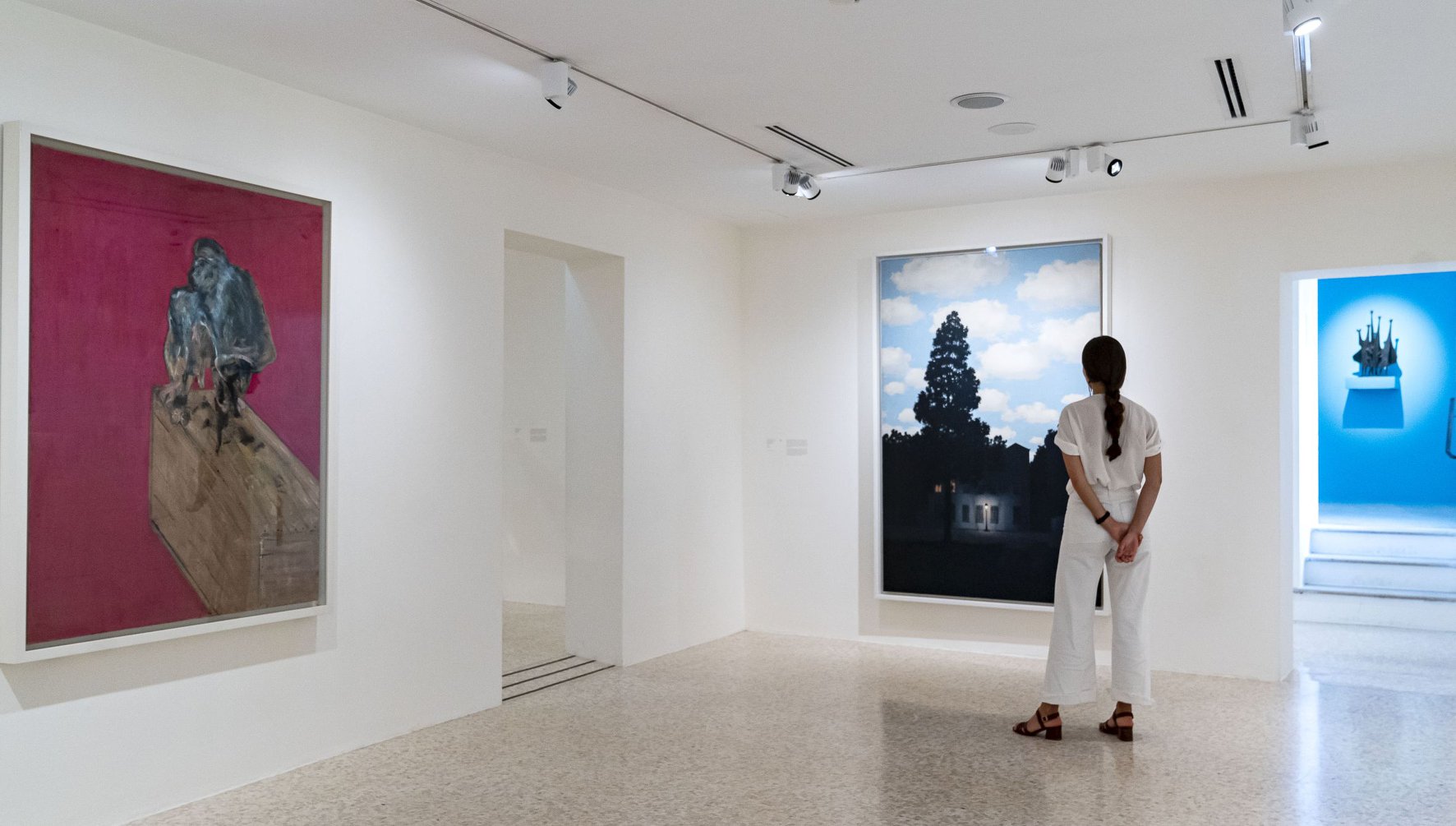My testimony refers to a turning point and a change that affected my life and something that art can sometimes trigger. I’ve been involved with art for about 25 years, but it wasn’t a dazzling start, one of those moments that lights you up from childhood.
At 19, I enrolled in Economics in Venice, still unsure of what I wanted to do when I grew up. Then one day, I visited the Peggy Guggenheim Collection, right there in Venice.
And something happened. I don’t want to put it on an intellectual level, but rather as a feeling, an instinct. I felt like I was in a welcoming place that spoke to me.
And for some reason, I thought: “One day, I want to work in a place like this.” Ten years later, I ended up working exactly there, in what was the home of one of the most important collectors of the 20th century, Peggy Guggenheim.
And it’s a place, for those few who have never been, that talks about art, revelations, transgressions, beauty, and uniqueness. The building itself—Palazzo Venier dei Leoni—is unusual, with a large terrace overlooking the Grand Canal, and not many know that this comes from the fact that the original 18th-century design planned for multiple floors, but due to financial constraints faced by the Venier family, construction stopped at one floor, leaving a very large, atmospheric roof terrace.
But it wasn’t just the building that “spoke” to me; I was also “struck” by more than one artwork. Among them, certainly, The Empire of Lights by Magritte. A very famous work and a theme René Magritte revisited multiple times since 1949: one of these is at the Guggenheim in Venice from 1954. The very first from 1949 was sold at Christie’s in 2017 for 20 million dollars—but the one in Venice would undoubtedly be even more valuable.
The representation is simple: a house immersed in darkness, lit only by a small streetlamp, with a blue sky dotted with white clouds in the background. But the artwork is striking because it plays on contrast, on an apparently unreal oxymoron. Night and day, darkness and light, coexist simultaneously.
Magritte himself said:
“I had the idea of night and day existing together, as if they were one thing. It’s reasonable: in the world, day and night exist at the same time. Just as sadness always exists in some people, and at the same time happiness exists in others.”
I find that this simultaneity of day and night has the power to surprise and enchant. I call this power poetry. The effect it creates is one of unease and disorientation. This unease arises from the contradiction between everything we know and are certain of, and what seems to suddenly challenge our certainties. And here the connection to the present and current events seems evident. The artwork seems to say: the nature of man is made to have no certainty; anxiety and fear of something imminent accompany us, but it is also up to us to accept this state. By accepting it, we can face reality not necessarily with more serenity, but with more ‘awareness and centeredness,’ as Eastern disciplines would say.
Biografia
MARCO TREVISAN | Director of the Alberto Peruzzo Foundation, former General Director of Christie’s Italy, has been involved in art and collecting for over twenty years. He was responsible for corporate relations at the Peggy Guggenheim Collection in Venice, communications and PR manager for the USA from New York for FMR Art’é, director of Affordable Art Fair Italy (after bringing the project to Italy), and has collaborated, among others, with IED, Contrasto, and Il Sole 24 Ore.
